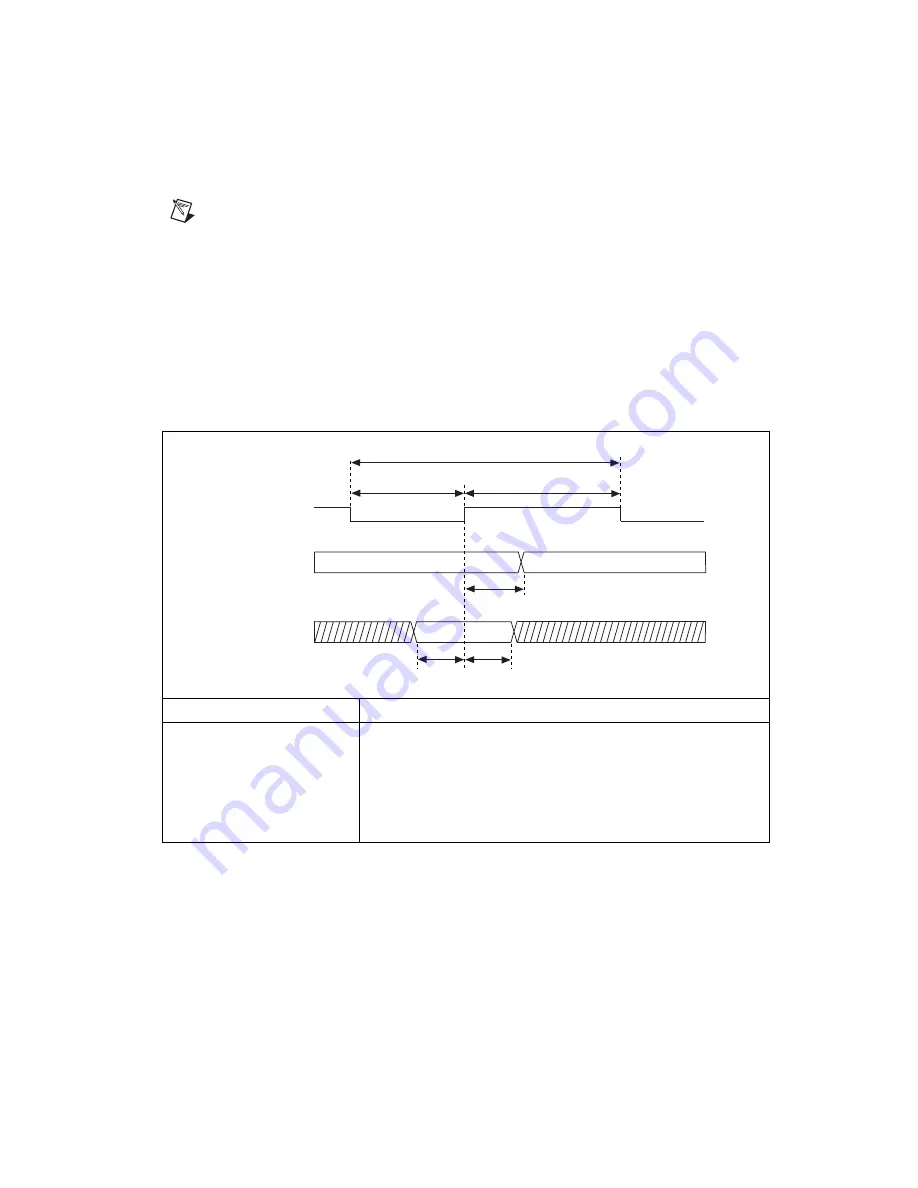
Chapter 3
Timing Diagrams
©
National Instruments Corporation
3-3
Note
For data transfers that use a hardware start trigger, there is no mandatory setup (t
su
)
or hold time (t
h
) for the STARTTRIG (ACK) signal. It can be asserted at any point before,
during, or after the REQ edge. If STARTTRIG is asserted too close to the REQ edge, it may
not be recognized until the next REQ edge. To avoid this uncertainty, you can observe an
optional setup time of 15 ns; in other words, assert STARTTRIG at least 15 ns before the
start of the REQ pulse.
The STARTTRIG signal is synchronized to the REQ edge using a flip-flop.
Because of this synchronization flip-flop, there is a one REQ-pulse delay
after STARTTRIG before the data capture begins. A two-cycle delay is
possible if you do not observe the optional setup time mentioned in the
preceding note.
Figure 3-2.
External Request Timing Diagram
Parameter
Description
t
c
Cycle time
t
hw
Width of low pulse
t
p
Propagation time to valid output data
t
su
Setup time
t
h
Hold time
Data Valid
(Output Mode)
Data Valid
(Input Mode)
REQ
t
h
t
su
10 ns
Min
20 ns
Min
t
p
30 ns Max
t
hw
20 ns Min
20 ns Min
t
c
50 ns Min
t
w






























